| HOME > JAPAN GUIDE > FESTIVAL | ||||
 |
||||
We accept major credit cards      (except application for Japan Visa) |
 |
|||
| MAP | AIRPORT | SEASON | PHILIPPINES EMBASSY | |
 |
||||
| FESTIVAL(MATSURI) There are four seasons, spring, summer, autumn and winter, in Japan. In winter, there is Snow Festival..., in spring, there is Sakura Festival. And in summer season, there are various festivals which come from Urabone and Fireworks Displays(Hanabi). "Urabone" is one of the Buddhism's custom. Many of festivals of Japan have deep relation in the four seasons, Shinto shrine and Temple. |
||||
| SNOW FESTIVAL Feb.5〜11, 2014 Sapporo-city Hokkaido |
||||
 |
The Sapporo Snow Festival, one of Japan's largest winter events, attracts a growing number of visitors from Japan and abroad every year. Every winter, about two million people come to Sapporo to see a large number of splendid snow statues and ice sculptures which line Odori Park, the grounds at Community Dome Tsudome, and the main street in Susukino. For seven days in February, these statues and sculptures (both large and small) turn Sapporo into a winter dreamland of crystal-like ice and white snow. |
|||
| TAKAYAMA MATSURI Apr14〜15/Oct9〜10, 2014 Takayama-city Jifu-ken | ||||
 |
In April when the snow on the mountains which surround the basin of Takayamamelts away and solid ground reappears, Spring finally comes to Hida Takayama.As people joyously celebrate the new season, the sound of drums from festivalsin nearby village shrines echoes in the clear Spring air. The largest festival,the Sanno Matsuri, which is held April 14th and15th is hosted by the Hie Jinja Shrine. It is popularlyknown as the Takayama Spring Festival. Every Spring,people from all over Japan come to Takayama to celebrate this special festival. ※The three major Float-Festival of Japan: Takayama Matsuri, Kyoto Gion Matsuri and Chichibu Yo matsuri |
|||
| HAKATA DONTAKU May.3〜4, 2014 Fukuoka-city Fukuoka-ken | ||||
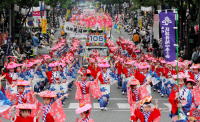 |
During the Dontaku Festival, many people, young and old, parade through the streets in various costumes, some playing the shamisen or beating drums, others clapping wooden spoons for scoping rice. The festival originates from the local custom dating back to the Heian period (13th century) , called 'toka' or 'matsubayashi,' during which the local people praised the feudal lord on the occasion of New Year. It is said that the upper class people of Hakata walked around the town on their way back from the castle. | |||
| KYOTO AOI MATSURI May15, 2014 Kyoto-city Koto-fu | ||||
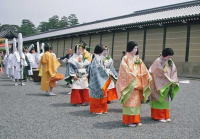 |
The Aoi Festival is the most important annual festival dedicated to both the Kamigamo Shrine and Shimogamo Shrine and is held annually on May 15th. The festival originated in the 6th century and reached its peak of grandeur during the Heian period. The Tale of Genji (the world's first full-length novel written in the early 11th century) makes a direct reference to the Aoi Festival. Approximately 500 people form a procession dressed in all kinds of colorful Heian-period costumes. The procession departs from the Imperial Palace and ends at Kamigamo Shrine after a brief stop at Shimogamo Shrine on the way. ※The three main festivals of Kyoto: Aoi Matsuri, Gion Matsuri and Jidai Matsuri |
|||
| TOKYO SANJA MATSURI May16〜19, 2014 Asakusa Taito-ku Tokyo-to | ||||
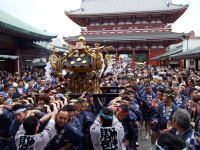 |
SANJA MATSURI, which is one of the Three Great Festivals of EDO (now Tokyo), is held on the third Saturday and Sunday every May by the Ujiko ( inhabitants of the neighbouring community) at Asakusa Shirne (previously called "SANJA Daigongen Shrine" ),sacred to the tutelary deity of the locality ,Asakusa. Although the festival seems to date from older times, the presentday from of the festival was established in the Edo period (1603-1868). The parade of the portable shrines is conducted primarily for the mutual amity of the Ujiko and he prosperity of the community but also enjoyed by people other than the Ujiko | |||
| KYOTO GION MATSURI July 1〜3, 2014 Kyoto-city Koto-fu |
||||
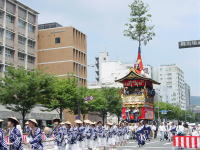 Grand Parede(17 July) |
The Gion Festival is one of the largest scale festivals in Japan along with Kanda Festival in Tokyo and Tenjin Festival in Osaka. The festival spans the entire month of July and is crowned by the grand pageant of magnificent floats on the 17th when thirty-two floats called hoko and yama are pulled through the downtown. The three nights leading up to the grand parade are called yoiyama during which time special festival music with bells and whistles is performed all around the city and thousands of people come out to enjoy the spectacle. The origin of this festival dates back to the Heian period (8th-12th century) and it flourished in its present form during the Muromachi period (13th-15th century). ※The three main festivals of Kyoto: Aoi Matsuri, Gion Matsuri and Jidai Matsuri ※The three major Float-Festival of Japan: Takayama Matsuri, Kyoto Gion Matsuri and Chichibu Yo matsuri |
|||
| SUMIDAGAWA FIREWORKS CONVENTION July 26, 2014 Tokyo |
||||
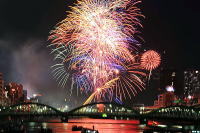 |
Sumidagawa Fireworks Convention started in 1978. But the origin goes
back till 1732. The number of the fireworks launched exceeds 20,000 pieces, nearly 1 million viewers see the fireworks displays every year. One of the Bigest Fireworks convention in Tokyo. |
|||
| HIROSAKI NEPUTA August 1〜7, 2014 Hirosaki-city, Aomori-ken |
||||
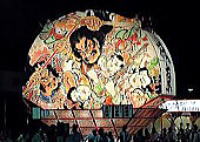 |
The name of the festival of Aomori city is Nebuta, one of Hirosaki city
is Neputa. The theories abound as to about Heputa. One of the theory, Sakanoue Tamuramaro,the generalissimo shogun, made some big dolls for decoy out an enemy in beginning of the 9th century. The Hirosaki local lord made big lanterns for Urabone in July 1593. And it is generally believed that Neputa was caused by fusion of Tanabata Festival, Touro-Nagashi and other common practices. About 80 float(photo) parade. |
|||
| AOMORI NEBUTA August 2〜7, 2014 Aomori-city Aomori-ken |
||||
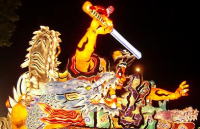 |
Aomori, a mountainous prefecture on the coast, is at the northernmost tip of Honshu Island. The annual Aomori Nebuta Festival in Aomori city, the center of the prefecture, is renowned throughout Japan and the world. This summer festival is designated as a significant intangible folk cultural asset of Japan. At the festival, more than 20 large lantern floats depicting human figures are paraded through city streets. These floats are called nebuta. Each float is accompanied by haneto dancers who dance wildly to ohayashi festival music, adding to the excitement of the summer night event. | |||
| AKITA KANTO FESTIVAL August 3〜6, 2014 Akita-city Akita-ken |
||||
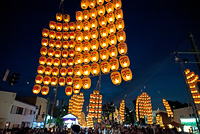 |
For a moment everything stands still and then, with the signal of echoing sound of the bamboo flutes 230 Kanto poles are risen at the same time. The Festival has begun. In the swirl of cheering shouts, musical accompaniment, spectators' shouts of admiration and encouragement, performers' attention is concentrated to the Shinto offering of cut paper (Gohei) which is placed at the very top of the 15 meters high bamboo pole - the Kanto. | |||
| YAMAGATA HANAGASAMATSURI Aug.ust 5〜7, 2014 Yamaga-city Yamaga |
||||
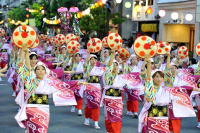 |
The Yamagata Hanagasa Festival is highlighted by the booming cries of
"Yassho, Makasho" accompanied by the gallant sound of the Hanagasa
Taiko drums and gorgeously decorated floats leading more than 10,000 dancers
adorned in beautiful costume with Hanagasa flower hats through the main
street of Yamagata city. In recent years, the 'Yamagata Hanagasa Festival' has been added to the big three festivals of Tohoku, as a fourth member representing the major festivals in Tohoku. It is said that more than one million people flock to the city during the term of the festival. |
|||
| SENDAI TANABATA Aug.ust6〜8, 2014 Sendai-cty Miyagi-ken |
||||
 |
The Yamagata Hanagasa Festival is highlighted by the booming cries of
"Yassho, Makasho" accompanied by the gallant sound of the Hanagasa
Taiko drums and gorgeously decorated floats leading more than 10,000 dancers
adorned in beautiful costume with Hanagasa flower hats through the main
street of Yamagata city. In recent years, the 'Yamagata Hanagasa Festival' has been added to the big three festivals of Tohoku, as a fourth member representing the major festivals in Tohoku. It is said that more than one million people flock to the city during the term of the festival. |
|||
| The Tree Main Festival in Tohoku (Tohoku Sandai Matsuri) | ||||
| *Aomori Nebuta August 2〜7 *Akita Kanto August 3〜6 *Sendai Tanabata August 3〜6 ※Tohoku →Blue area of Map |
 Tohoku Sandai Matsuri Tour Tohoku Sandai Matsuri TourNebuta Matsuri, Kanto, Tanabata, Lake Towada, Chusonii Temple, Matsushima |
|||
| TOKYO BAY FIREWORKS CONVENTION August 10, 2014 Harumi Area, Tokyo |
||||
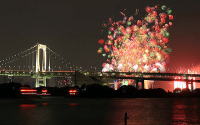 |
Tokyo Bay Fireworks Convention started in 1988. 12000 or more fireworks are launched, viewers exceed more 700,000 persons. One of the Bigest Fireworks convention in Tokyo. *ACCESS: Kachidoki Station, Tsukishima Station (Oedo Line), Toyosu Station, Tsukishima Station(Yurakucho-Line), Tsukiji Station, Higashiginza(Tokyo Metro-Line) |
|||
| OMAGARI Fireworks Convention August 23, 2014 Omagari, Daisen-city Aomori |
||||
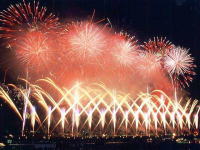 |
Omagari Fireworks Convention started in 1910. It is called true fireworks
competition because the maker of fireworks launches fireworks himself.
*ACCESS: Aerial route to Akita Aiaport: From Tokyo Haneda Airport = 60minutes Nagoya Airport = 70 minites Osaka Itami Airport = 80 minutes |
|||
| KYOTO JIDAI MATSURI October 15〜23, 2014 Kyoto-city Kyoto | ||||
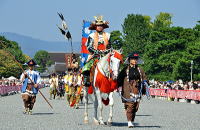 |
Jidai Matsuri is festibal of Heian Jingu Shinto Shrine and one of the
three main festivals of Kyoto. It started in 1895.
The main event of Jidai Matsuri is parade. The parade is divided into eight times, Meiji, Tokugawa, Azuchi-Momoyama, Muromachi, Kamakura, Heian and etc. The 2000 or more people who wore the dress of that time parade from Kyoto Gosho to Heian Jingu in 22 October. ※The three main festivals of Kyoto: Aoi Matsuri, Gion Matsuri and Jidai Matsuri |
|||
| CHICHIBU YO-MATSURI December 1〜6, 2014 Chichibu-city, Saitama | ||||
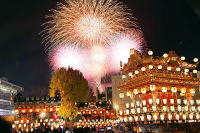 |
Since the main event of a festival is performed at night, it is referred
to as Yo-maturi(Night Festival). Yo-matsuri is festival of Chichibu
Jinja Shinto Shrine and one of the three major Float-Festival of Japan. The Myoken-Bosatsu is enshrined in Chichibu Jinja. And Zao-Gongen is enshired in Mt. Buko. Myoken-Bosatsu and Zao-Gongen date secretly once a year. Myoken Bosatsu rides on a float and goes to meet Zao-Gongen in night. But Myoken Bosatsu have to pass the Suwa Jinja Shrine that wife of Zaogongen is living. Therefore, in front of Suwa Jinja, musical accompaniment is stopped, the fire of a candle is extinguished and it goes past calmly. This is a tradition related to Yo-matsuri. ※The three major Float-Festival of Japan: Takayama Matsuri, Kyoto Gion Matsuri and Chichibu Yo matsuri |
|||
| TICKET・ TOURS & JAPAN VISA | ||||
| HOTEL DUSIT THANI | SM MALL OF ASIA | SM MEGAMALL | SM SOUTHMALL | |
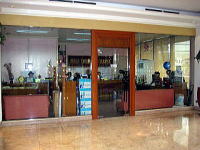 |
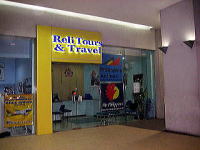 |
 |
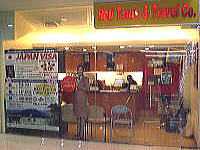 |
|
| 632-893-9226 0906-280-6666 |
632-556-1445 0906-513-6777 |
632-637-4694 0906-513-6555 |
632-800-4948 0906-513-6222 |
|
Reli Tours & Travel is affiliated with IATA(International Air Transport Association) April 1988 up to present. It is also a member of the following associations: PTAA, NAITAS and DOT. |
||||
| COPYRIGHT 2012 "Reli Tours and Travel" All Right Reserved |
||||